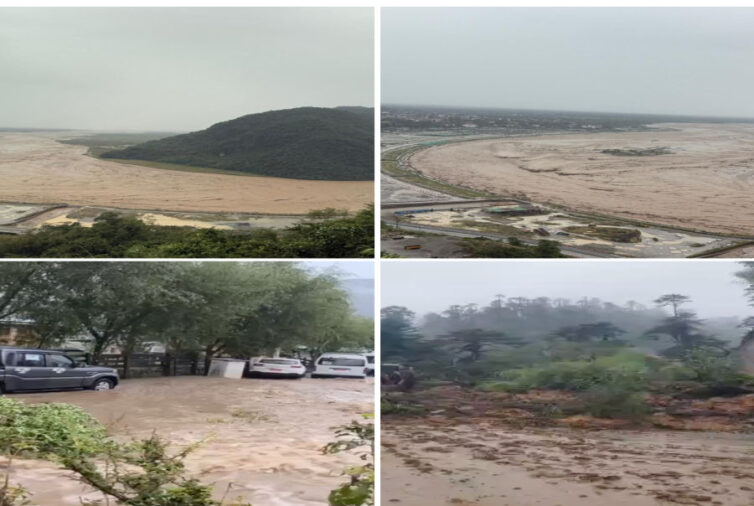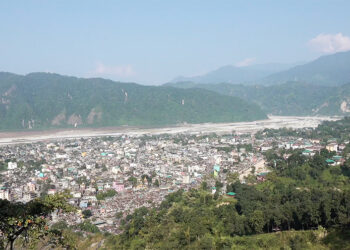 Last week’s floods and landslides, triggered by continuous and intense rainfall, have left a trail of destruction across the country. The disaster has damaged several bridges, roads, homes, and farmlands. According to the Department of Local Governance and Disaster Management, the southern and western regions, particularly Samtse, Chhukha, Haa, and Dagana, were among the hardest hit.
Last week’s floods and landslides, triggered by continuous and intense rainfall, have left a trail of destruction across the country. The disaster has damaged several bridges, roads, homes, and farmlands. According to the Department of Local Governance and Disaster Management, the southern and western regions, particularly Samtse, Chhukha, Haa, and Dagana, were among the hardest hit.
According to the Department of Local Governance and Disaster Management’s assessment report, 31 bridges across the country have either sustained major structural damage or been completely washed away.
Of the affected bridges, 10 are in Haa, nine in Chhukha, eight in Samtse, two in Wangdue Phodrang, and one in Bumthang.
In terms of roads, as per the Department of Surface Transport’s Facebook post, 10 roads remain closed, four highways and six district roads.
Samtse, Chhukha, Phuntshogling Thromde, Haa, Paro, and Dagana reported severe damages to houses and other infrastructure.
In Samtse, a house was completely washed away, and the drinking water source of Norbugang Higher Secondary School was damaged.
In Chukha, two one-storied houses in Dungna and Logchina were partially destroyed.
Haa reported the loss of two mining camps in Sertena and the complete damage of a bungalow in Anakha.
In Bumthang, two houses were partially damaged in Choekhor Gewog.
Infrastructure damage was also reported in Punakha and Wangduephodrang, where retaining walls, irrigation channels, and rural water supply systems were washed away.
Tsirang and Zhemgang reported damages to several houses and public facilities, with roofs blown off and walls damaged, including the Zhemgang Dzongdag’s residence.
In Dagana, drinking water sources and several homes sustained major damage across five gewogs.
Paro saw the most widespread structural impact, with collapsed protection walls, damaged irrigation channels, and affected religious sites, including the Ringpung Dzong and Gomdralo Gonpa.
In Phuntshogling, 56 stockyards and the Workforce Management Centre were severely affected by flooding along the Amochu.
The floods also destroyed over 20 acres of maize, 19 acres of paddy, 27 acres of cardamom, along with orange, mango, and other crops, affecting local food production and livelihoods. The worst-hit districts were Dagana, Chhukha, and Zhemgang.
Tsirang, Bumthang, Samtse, Wangduephodrang, and Paro also reported significant crop losses.
Livestock losses were severe as well.
In Samtse, 167 layer birds, 65 pigs, 50 local poultry, 15 cows, and 14 goats were lost.
In Dagana, two oxen have died, while Haa reported the loss of one calf. Tsirang saw three fishery ponds destroyed, and Chhukha reported damage to one fishery pond, two beehives, and lost seven goats.
Telephone connectivity has been restored in many areas out of the 236 sites that were initially reported without service.
As of the latest update, 22 Bhutan Telecom sites and 18 TashiCell sites remain without connectivity.
The floods also caused significant damage to machinery and equipment used in construction and transport.
Authorities reported losses of 16 excavators, 30 trucks, 11 light vehicles, 9 motorbikes, and 5 crusher plants across the affected areas.
According to the Department of Local Governance and Disaster Management, restoration efforts are underway across the country, with priority on Haa, Samtse, and Phuentshogling.
In Haa, road-clearing teams have removed major blockages and are working on farm roads, while a temporary bypass is planned where the Sherchu Bailey bridge was washed away.
In Samtse, Denchukha Gewog remains cut off, with helicopters delivering essential supplies and a temporary bridge under construction.
In Phuentshogling, electricity, water, and internet have been restored at the National Workforce Centre. Residents were relocated, and agencies are clearing debris and building a temporary barrage to prevent further flooding.
Tashi Dekar
Edited by Phub Gyem










